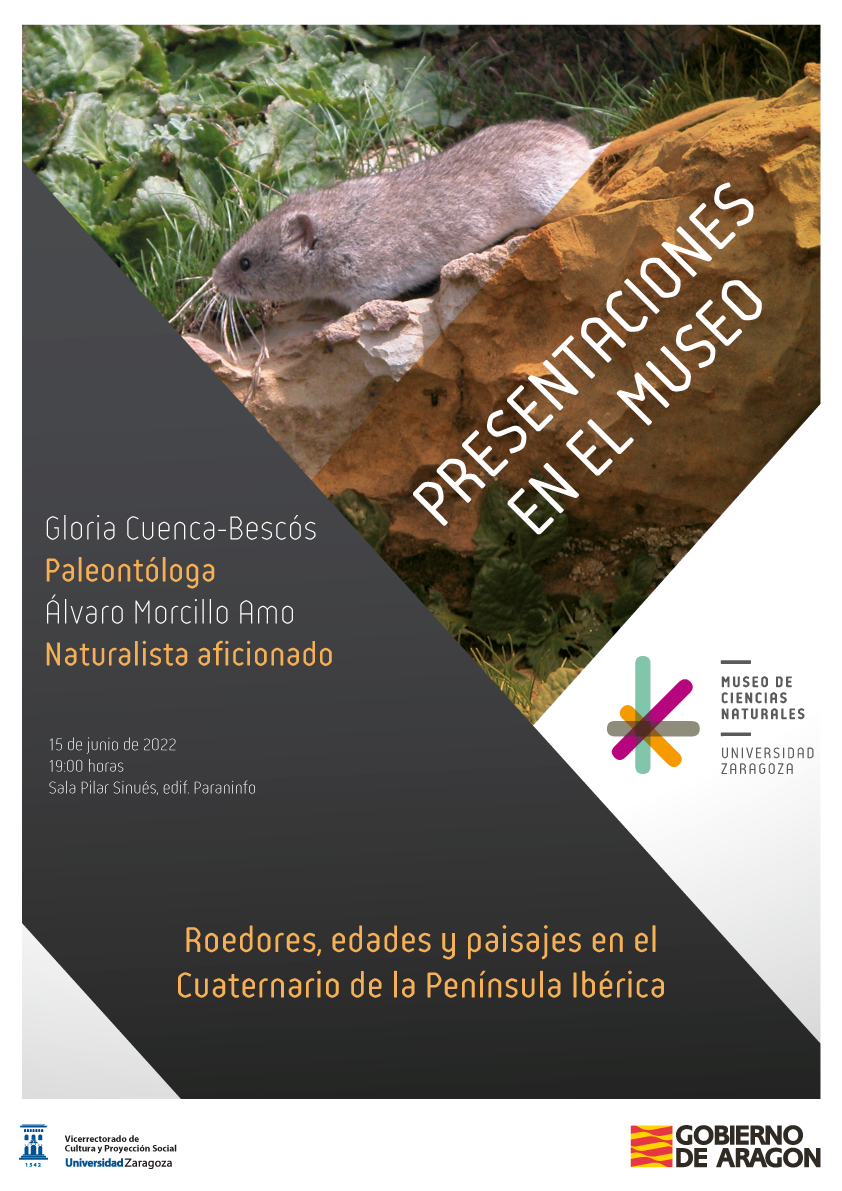(Zaragoza. Thursday, June 16, 2022). Last Wednesday, June 15, the presentation of the book “Rodents, ages and landscapes in the Quaternary of the Iberian Peninsula” written by the Professor of Paleontology Gloria Cuenca-Bescós and the naturalist Álvaro Morcillo Amo took place at the MCNUZ. The presentation took place in the Pilar Sinués room of the Paraninfo building of the University of Zaragoza.
This book is the first to synthesize all the existing information on rodents in the Iberian Peninsula. To make this compilation, its authors reviewed nearly 5,000 articles, specialized websites, fossils from Science Museums and current comparative anatomy materials.
Rodents are the numerically most abundant mammal in archaeological and paleontological sites. Therefore, it is of great importance to calculate the age of the deposits. They have been able to apply innovative microscopic techniques, scanners, virtual reconstructions and compare DNA from ancient species with current ones to find out their origin. And all this can be achieved from its tiny teeth and fossil bones.
Rodents are essential to know the Quaternary, the geological period in which we find ourselves. The key to rodents’ success as daters is that they evolved and diversified rapidly from the late Tertiary to the early Quaternary. In addition, since most species live in the present, we can make a very precise environmental and climatic reconstruction of the places where the deposits are found, many of them inhabited by humans.


